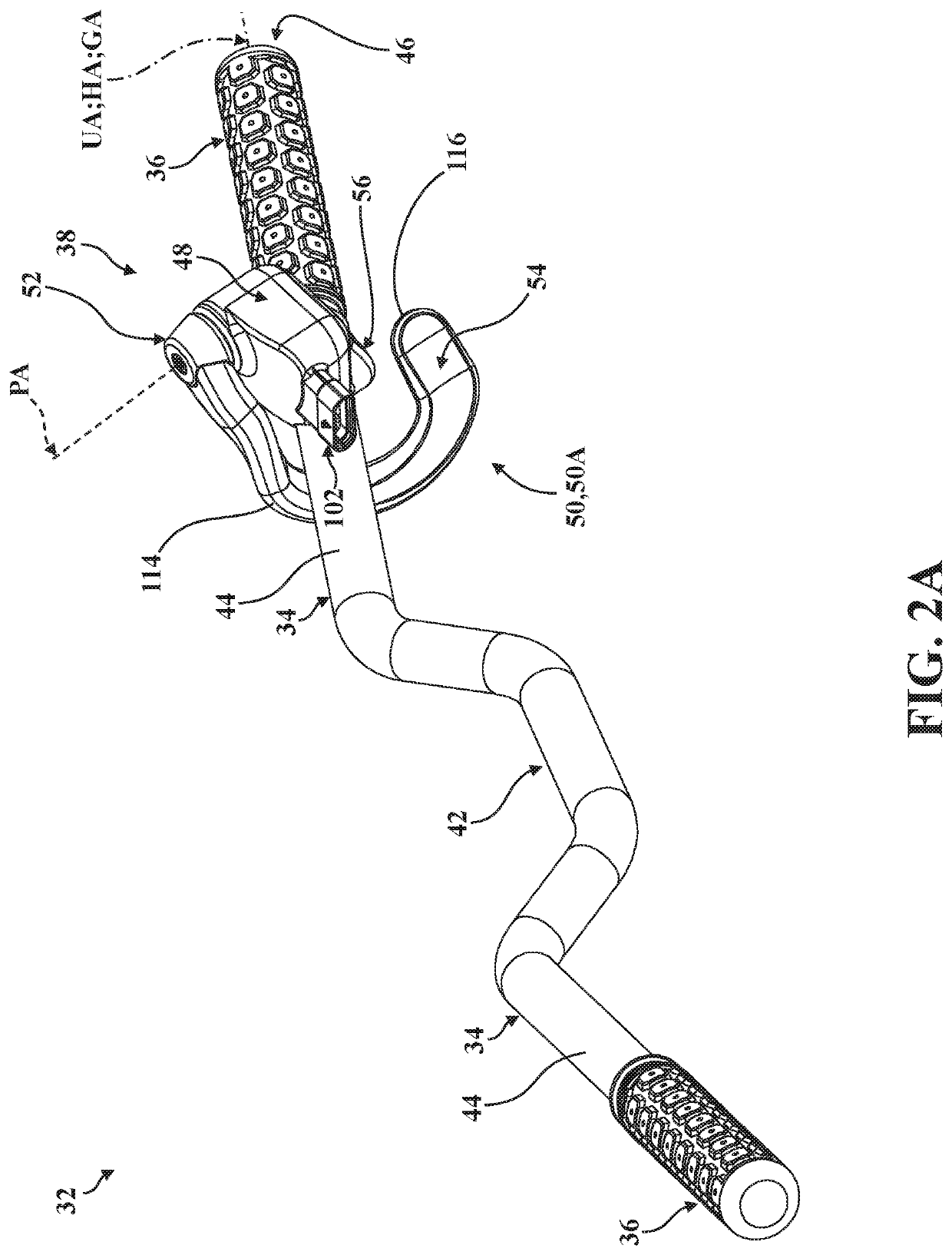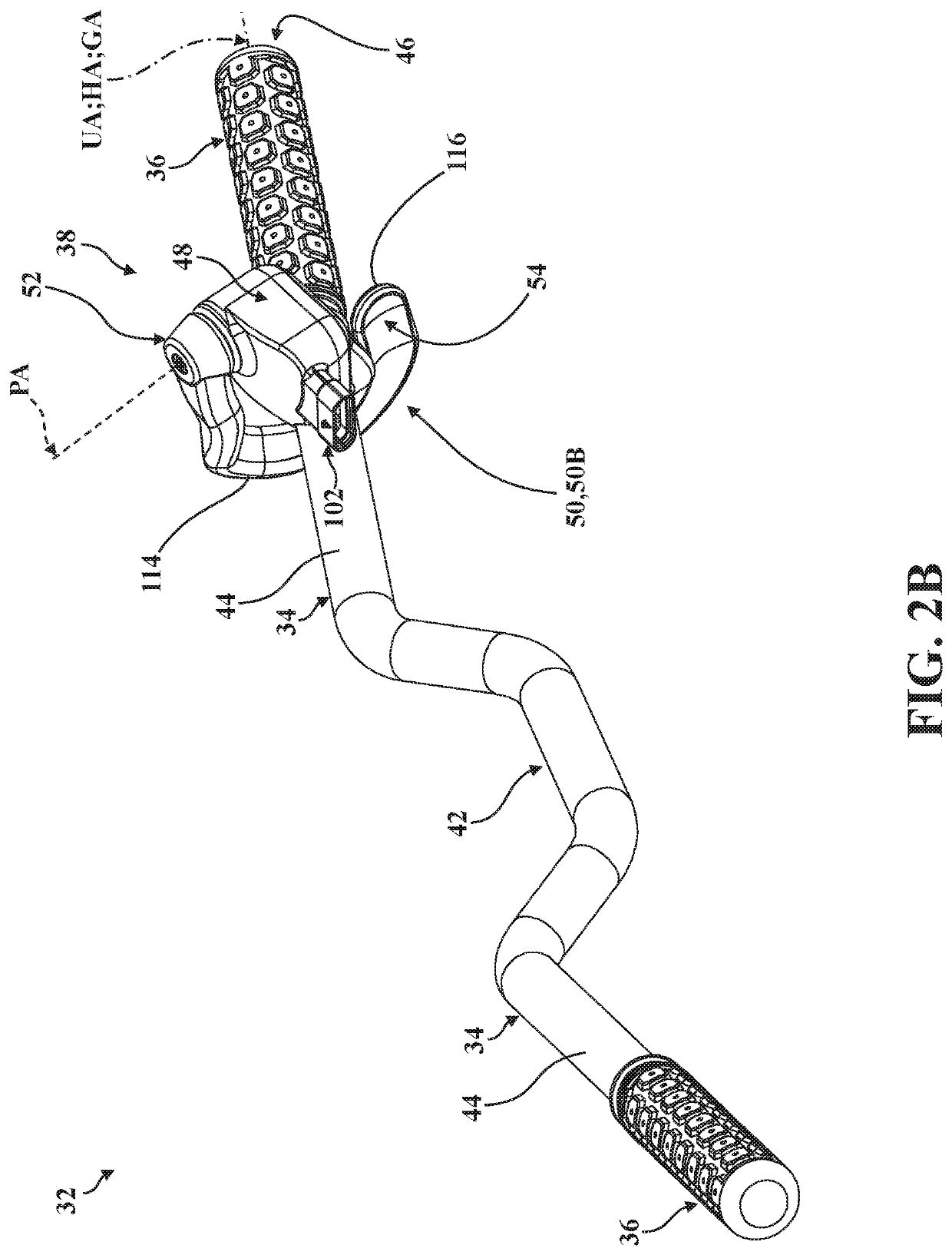Control systems and throttle assemblies for vehicles having handlebars
a technology of control system and throttle assembly, which is applied in the direction of cycle control system, vehicle, cycle equipment, etc., can solve the problems of unfavorable “twist” throttle assembly, unfavorable rider engagement with the throttle, and difficulty in maintaining the grip of the rider, so as to reduce the cost and complexity, improve the effect of functionality and usability
- Summary
- Abstract
- Description
- Claims
- Application Information
AI Technical Summary
Benefits of technology
Problems solved by technology
Method used
Image
Examples
Embodiment Construction
[0029]Referring now to the drawings, where like numerals indicate like or corresponding parts throughout the several views, a vehicle is generally shown at 30 in FIG. 1. The vehicle 30 comprises a control system 32 for use by rider (sometimes called an “operator” or a “driver”) of the vehicle 30. In the representative embodiment illustrated herein, the control system 32 includes one or more handlebars 34, grips 36, and a throttle assembly 38, each of which will be described in greater detail below.
[0030]The handlebars 34 are arranged for engagement by the rider to steer the vehicle 30 during use, and generally support the grips 36 which provide support to the rider's hands. The handlebars 34 also support the throttle assembly 38, which is adapted to enable the rider to control vehicle 30 acceleration and modulate speed, such as by regulating airflow into an internal combustion engine 40 which generates rotational torque used to propel the vehicle 30. However, those having ordinary s...
PUM
 Login to View More
Login to View More Abstract
Description
Claims
Application Information
 Login to View More
Login to View More - R&D
- Intellectual Property
- Life Sciences
- Materials
- Tech Scout
- Unparalleled Data Quality
- Higher Quality Content
- 60% Fewer Hallucinations
Browse by: Latest US Patents, China's latest patents, Technical Efficacy Thesaurus, Application Domain, Technology Topic, Popular Technical Reports.
© 2025 PatSnap. All rights reserved.Legal|Privacy policy|Modern Slavery Act Transparency Statement|Sitemap|About US| Contact US: help@patsnap.com



